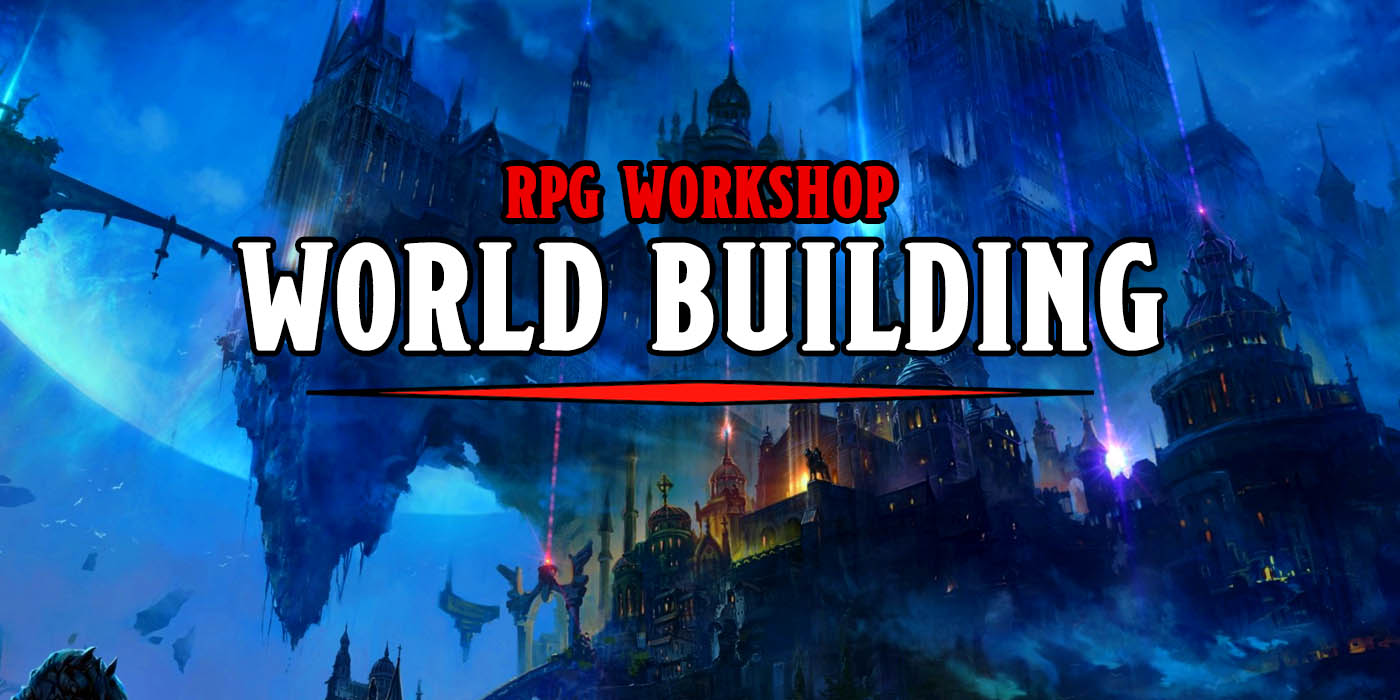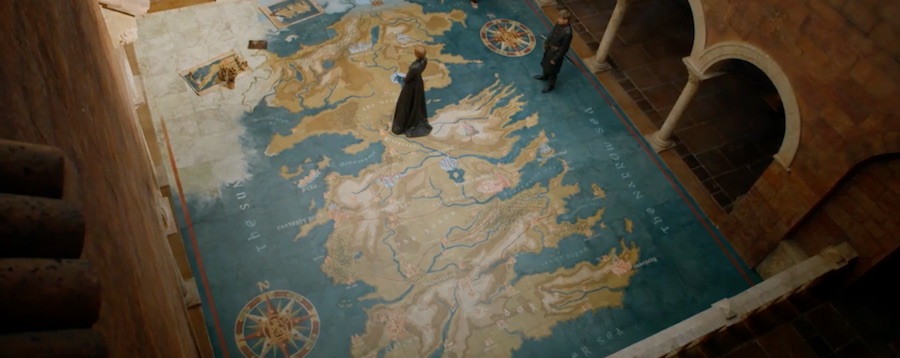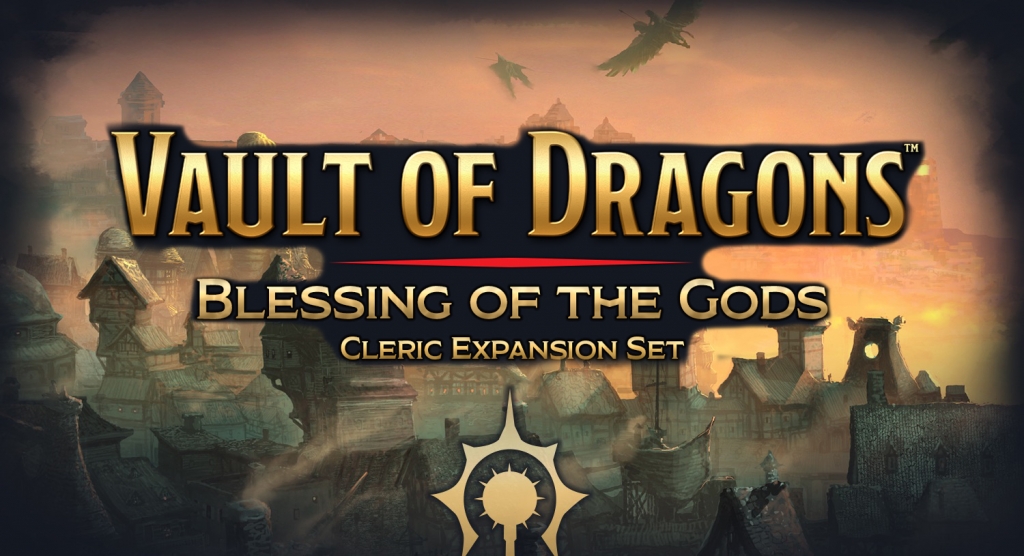D&D World Building Workshop: Laying the Groundwork

Let’s talk about how to build the perfect world for your D&D game.
One of the first choices any GM has to make when getting ready to run a game is to pick the setting. You could choose to set your game in an existing world such as Faerun or Middle Earth, or even a larger setting like Star Wars or the Warhammer 40K universe. All of these are great choices to run your game in. Using an existing setting can be very rewarding, and there are plenty of reasons to do so, but we aren’t here to talk about those reasons, we’re here to talk about what happens if you don’t want to use a pre-made setting.
There comes a time in almost every DM’s life when they want to move beyond the existing settings and create one of your own. Maybe you have an amazing story to tell and it needs it own world to be told in. Maybe you have a super awesome idea for a world and just want to run adventures in it. Maybe you just like making up settings. Whatever the impetus, creating your own setting can be fun and rewarding both to you and your play group. In this new on going series, we will look at the steps you can take to create your own setting (a process known as world-building), and we’ll look at some tips and tricks of good world-building and some common mistakes people make. Along the way, we will build our own setting and world.
Welcome to World Building Workshop, let’s get started.
The First Steps
Before you dive right into forming continents out of the aether and bringing armies into being with a snap of your fingers, there are some choices to be made. Some of the first ones to make are pretty obvious. You’ve got to decide what genre of game the setting will be for. A sci-fi setting and a classic High Fantasy will look very different. A setting for cyberpunk thriller and western may share elements, but you’d want to look a little different. Also, don’t be afraid to mix genres! Some of the best settings out there are mashups, Star Wars is a sci-fi fantasy, Firefly is a sci-fi western, etc. At this early point you don’t have to have everything 100% figured out, but its important to have at least a broad idea of what kind of game you are looking to run.
Another key decision is thinking about what game system you are looking to run your game using. This step can be optional. It’s perfectly possible to build out your world, and make it amazing, and then figure out what game system you want to use. However I normally find its a good idea to have an idea of what system I’m going to use at the start. This is especially true if you are using a well developed system. The reason is simple, games systems like D&D have a lot of flavor built into the rules themselves. This can both help and hinder your world building. Working preexisting ideas into your setting can speed things up and be useful. If you chose to use D&D, you can take advantage of the already developed races and classes and work them into your world building. You’ll also be aware of what’s there if you chose not to use it.
This last point is pretty important: if you build a world on its own and then at the end chose to use the D&D rules without thinking it through this can lead to some issues. If your player wants to play as a Dragonborn Samurai, but your setting doesn’t have either of those things into it you can run into problems. Thinking about these things ahead of time can lead to a smoother world-building process, and let you work unique aspects of your game system into your world.
For this series, we are going to build a classic high fantasy world to be used with the 5th Edition D&D rules.
A Note: Building for Games vs Building for Other Stories
I want to take a moment to discuss some of the aspects of building for a world for a role-playing game vs. a setting for a traditional story. World building of course can be used to create settings both for RPG games and for written, or other, works. Writers are almost always world building to one degree or another. While what I’m going to cover in this series could be used to build a world for a story or book, it is going to be focused on building a world for playing an RPG in. The big difference here is that when writing a story you have a lot more control over what the characters see, do, and ask than when running an RPG. RPG worlds need to be, to me at least, deeper than something for story has to be (not that they can’t be) because players take things in unexpected directions and you need to be prepared for those surprises. Anyway, back to the world.
Scope and Scale
The last two things you want to think about before getting started on the world is the scope and scale of the game you are going to running. These things can have a significant impact on how you approach building the world. For me, scale comes down to “how big of an area is my game taking place in.” Games can take place in all sizes of areas. A cyberpunk game could take place entirely in one city and never move beyond that; fantasy games might span a continent; a sci-fi game could span dozens or hundreds of worlds. Having an idea of the scale of your game is going to determine a lot about maps and what things you will focus on in building the world, will it be neighborhoods in a city, or system spanning star nations.
Scope in my mind is “what level are my players going to be able to operate on and how much can they affect the world?” Your game may revolve around small group of down on their luck outlaws trying to make a living on the edges of society but never having an impact on anything big. It could also be about members of a powerful mystical line fighting over the destiny of civilizations. Again having some idea of this will help you focus on what you need to spend more time developing in your setting.
For a D&D game this can also be put as “what level characters is my game aimed at.” A game based around a 3rd-6th level party will look radically different from one focusing on 20th level epic characters. If you players are simple adventures fighting minor monsters at the edges of your kingdom you don’t need to spend a ton of time fleshing out the intricacies of court politics in the country three kingdoms over, its never going to affect the game. Likewise if your players are going to be commanding massive battles and fighting gods you might not have to worry about naming every person living on each street in your cities.
For our use we are going to focus on a continent-sized region and our theoretical players will act on a high level, able to effect the fate of nations.
Putting It Together
If you put these basic steps together you should be forming a basic idea of your setting. When it comes to world-building, a lot of times it’s a very logical process and having a good foundation of ideas can make the whole thing very easy. For our use, we know that we are going to building a classic high fantasy setting, our players should be able to effect high level politics, and the fate of nations. Our game will be set in a roughly continent-sized region and will be built with the 5th Edition D&D rules in mind. Next time we will go over some of the rules for good world building.
Tune in next time for more world building tips!














